SCIENCE / JUNE 2023
Canada’s Big Flex in Space
The Canadarm started as a boring robotic appendage.
Now the future of space travel depends on it
BY OMAR MOUALLEM
Published 6:30, Jun. 7, 2023
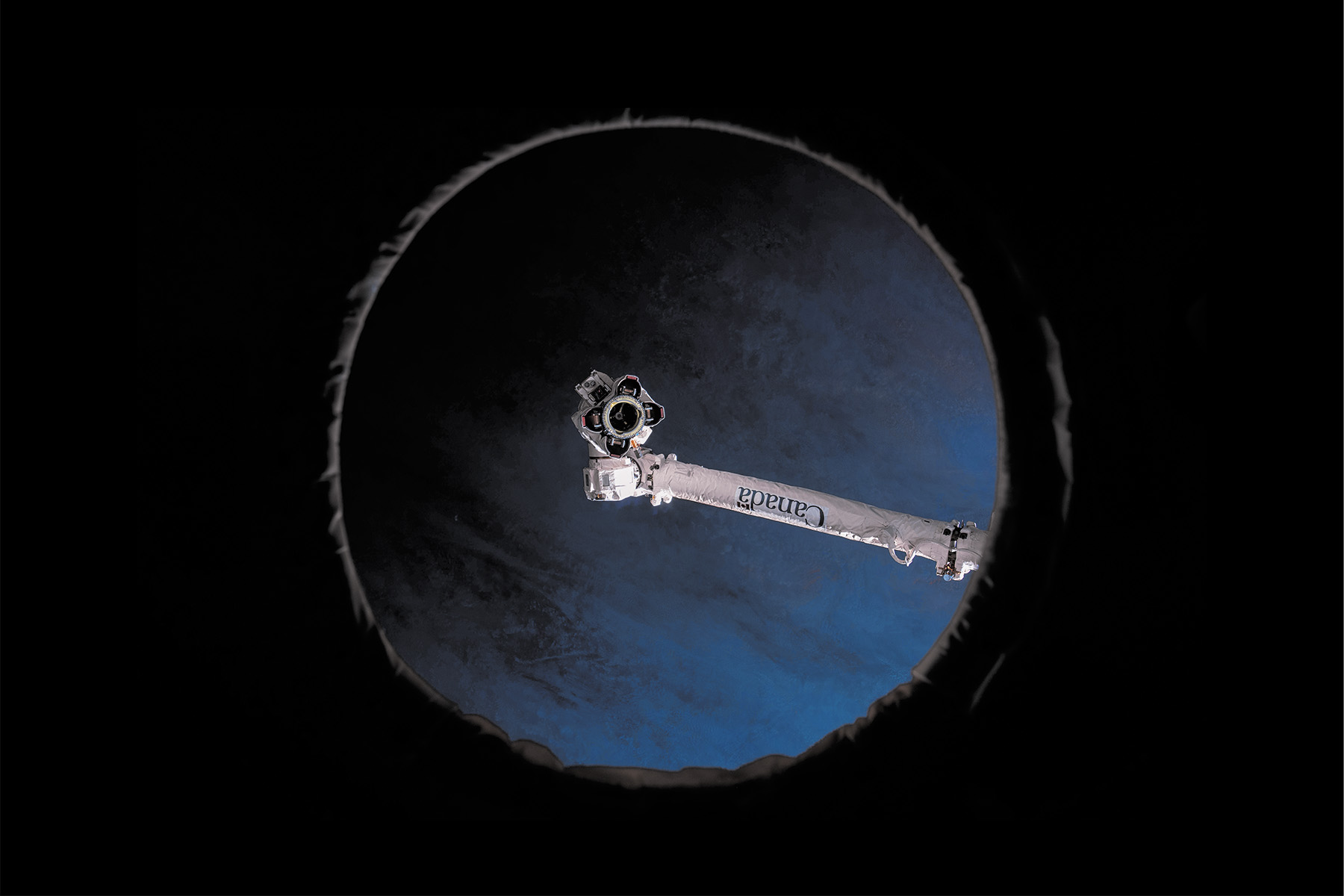
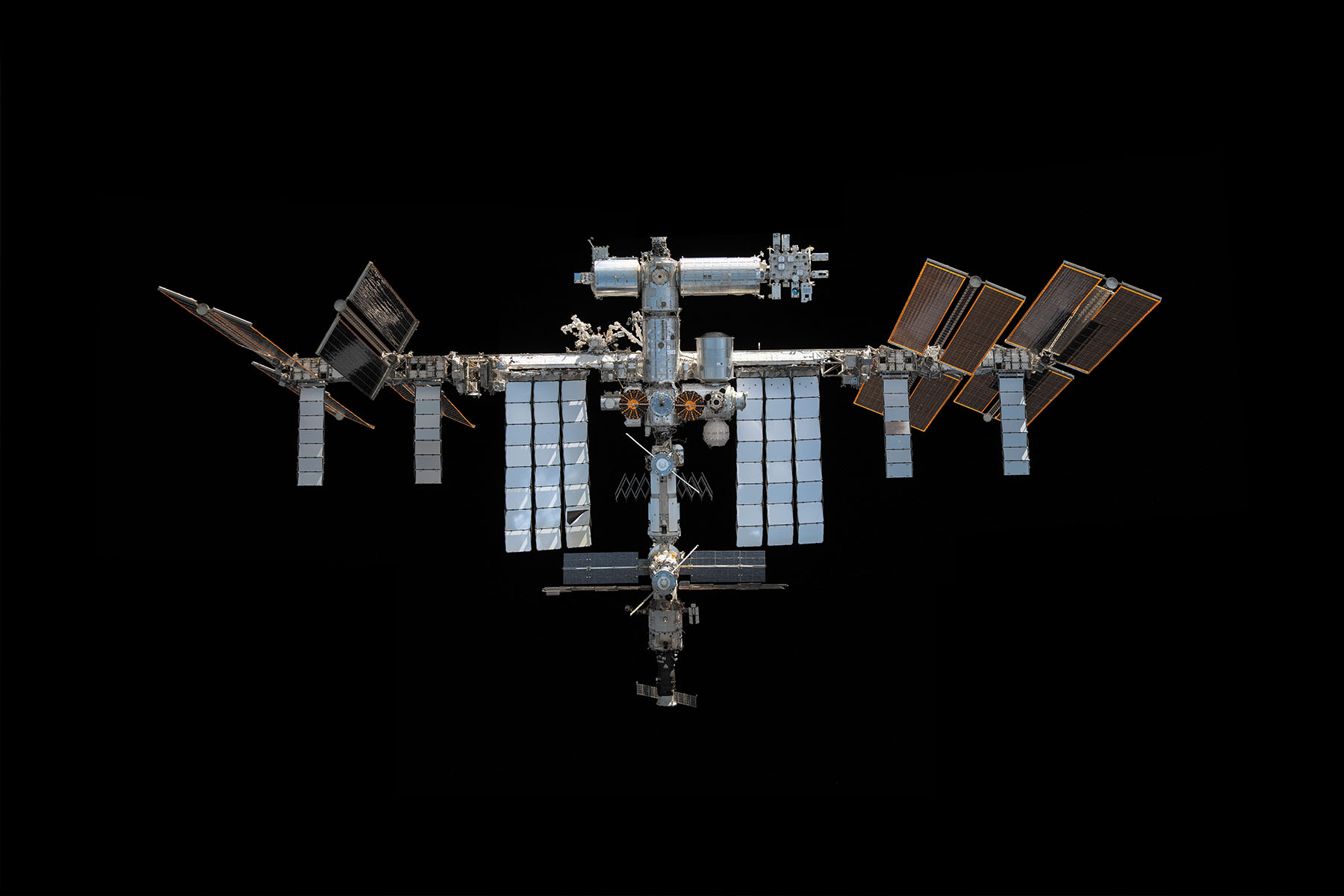
Chris Hadfield trained four years for a seven-hour spacewalk. On April 22, 2001, he and American astronaut Scott Parazynski were tasked with assembling and installing a payload, which had arrived with them via space shuttle, onto the International Space Station. The payload was the Space Station Remote Manipulator System—or, as it’s colloquially known on planet Earth, Canadarm2, the latest robotic limb in a series of Canadarms first announced in 1975 through a joint US–Canadian agreement. The original Canadarms (pronounced “Cana-darm,” not “Canada arm”—a pet peeve of Hadfield’s) were critical to the assembly and growth of the ISS.
Out there in low Earth orbit, 400 kilometres up, Hadfield began the first ever spacewalk by a Canadian. The first set of Canadarms had almost the same manoeuvrability as this new model: a shoulder moving on two axes; an elbow on one; a wrist that can pitch, yaw, and roll; and a grappler. Unlike the originals—which were affixed to the space shuttles Columbia, Atlantis, Endeavour, and Discovery—the Canadarm2 was designed to remain permanently attached to the ISS, to assist in the broader mission of space exploration and habitation. Seventeen metres long when fully extended, the Canadarm2 was only slightly larger than its predecessors, but it would be nearly twice as fast, three times stronger, much more dextrous, and exceedingly more useful. Whereas the first arm looked and functioned quite literally like an arm mounted at the shoulder, the Canadarm2 was like two arms connected to one elbow. This configuration would eventually allow it to move along rails running the length of the ISS, making it a 1,500-kilogram multi tool for the space station—a crane, grabber, and camera, all in one.
Hadfield and Parazynski successfully unfolded the new arm and attached it to the space station, but the entire mission nearly failed because of a loose fastener meant to connect one of the joints. Hadfield tried to fix it with a giant power drill, but even at maximum torque, the fastener just wouldn’t sit. He kept drilling; it kept floating. “It was a weightlessness thing,” Hadfield told me.
The crew ran through every backup plan with ground control, and just when it looked like it couldn’t get any worse, the anti-fog solution in Hadfield’s helmet contaminated his suit, effectively blinding him temporarily. “I had to open the purge valve on the side of my helmet to let my oxygen squirt out to space so that it could bring in fresh, dry, clean oxygen across my face to try and evaporate the tears off my eyes until eventually I could see just well enough to finish the spacewalk,” he recalled. “It was a real busy day.” After thirty minutes, Hadfield resumed his mission, triumphantly securing the fastener in place by turning a computer-controlled power tool into a primitive wrench.
Down in Houston, the shuttle’s capsule communicator, Canadian astronaut Steve MacLean, looked like he belonged in a Heritage Minute. He wore a Canadian Olympic hockey jersey and sat before a row of miniature Canadian flags atop the control room consoles. After the seven-hour, ten-minute spacewalk—almost the longest in history—was complete, everyone rose to their feet while the Canadian national anthem played over the air-to-ground radio.
But then, as soon as Hadfield and Parazynski plugged in the Canadarm2, the entire station’s computer operating system had a simultaneous meltdown. “It was really complicated and difficult and trouble-filled,” Hadfield recalled, “but, ultimately, completely successful. And the arms have been working ever since.”
Since first launch, though, Canadians haven’t been unanimously proud of the Canadarm. In 1995, Royal Canadian Air Farce poked fun at it with a sketch about one breaking. Even when Hadfield unveiled—from inside the ISS during his third and final space flight in 2013—a new $5 bill that depicted the Canadarm2, some people bemoaned the arm replacing the previous image of a pond hockey game. But Canadians in the distant future will probably feel differently about the arms: the first brought Canadian technology into low Earth orbit; the second, which expanded the ISS beyond the length of a football field, prepared the station for deep space exploration; and the Canadarm3, to be affixed to the Lunar Gateway, will support the moon-orbiting space station over the next twenty years and eventually assist humans on their way to Mars—accomplishing much of this in the absence of humans. To keep up in the space race, Canadarms need to keep evolving. “We’re not done,” Hadfield told me. “There’s a lot more numbers after three.”
The announcement of the Canadarm3, like many milestones of space exploration and innovation, should have been a moment of national pride. Instead, Prime Minister Justin Trudeau used the occasion in February 2019, standing inside the John H. Chapman Space Centre—the Canadian Space Agency’s headquarters located near Montreal—to seemingly deflect from a political scandal his administration was embroiled in: the night before, his then attorney general, Jody Wilson-Raybould, had given explosive testimony accusing him of interfering in her prosecution of the engineering firm SNC-Lavalin.
For some, the dodge worked. It’s hard not to be excited about space exploration. The Lunar Gateway, a multi-billion-dollar, multi-nation space station is slated to begin launching next year, drawing astronauts to conduct scientific experiments in deep space and on the lunar surface. Canadarm3 will likely arrive in 2027 or 2028, aboard Artemis 4 or 5—NASA’s series of missions with the objective of returning to the moon—and will do for the Lunar Gateway station what Canadarm2 has done for the ISS: capture visiting spacecraft, attach new modules, and support astronauts with deep space maintenance and experiments. Without these space station appendages, the overall mission of deep space exploration and habitation simply doesn’t exist.
Artemis 1, an uncrewed moon mission to test spacecraft and rocket systems for future crewed missions, was nearing completion in late 2022 when I met space engineers working at MacDonald, Dettwiler and Associates at the company’s Brampton, Ontario, headquarters. MDA also produces defence, satellite, and geospatial intelligence systems, but it was clear the golden child was its Canadarm program: the lobby displayed glass-encased miniatures of the first two robotic arms, framed photos, and a 3D digital model on a TV screen.
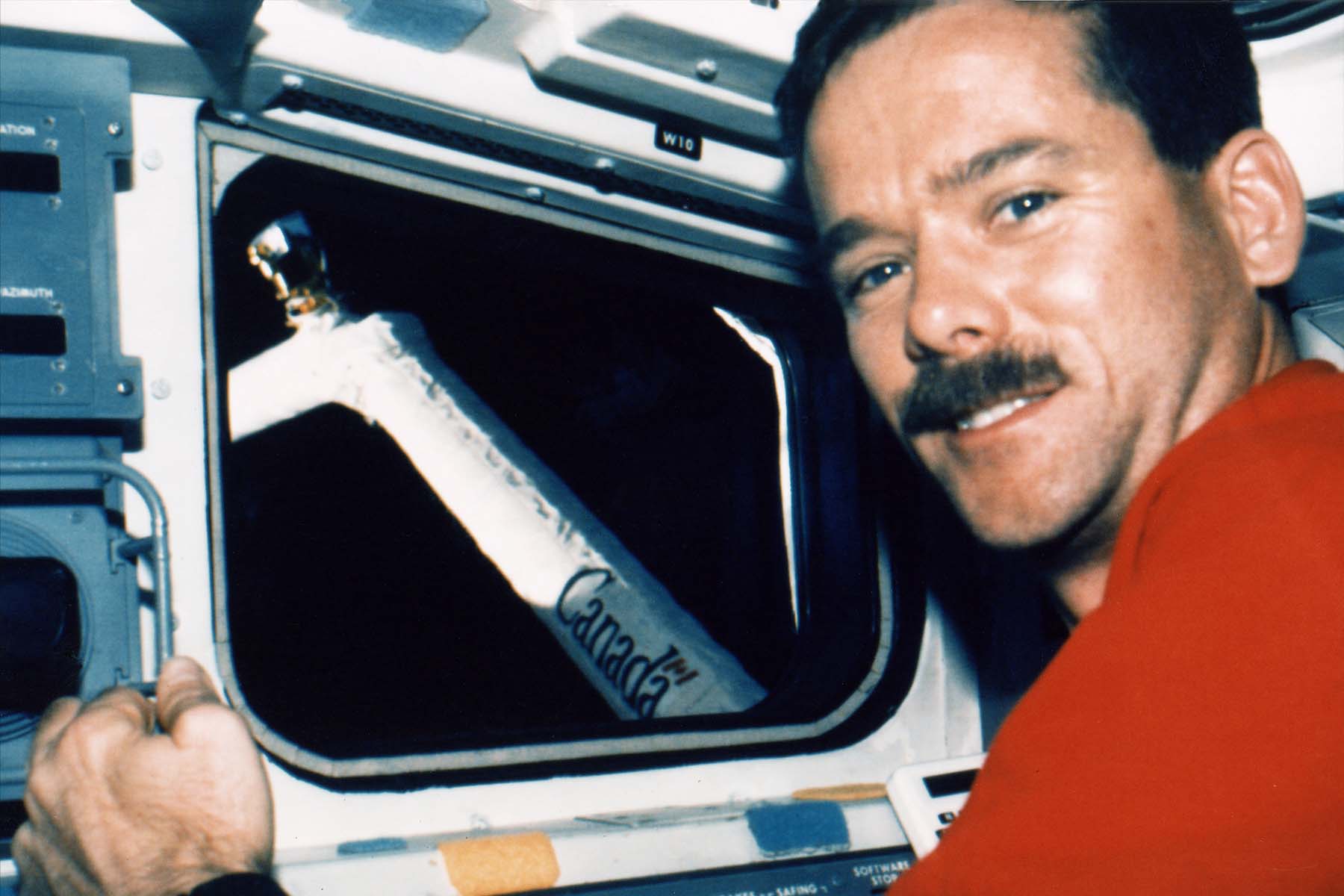
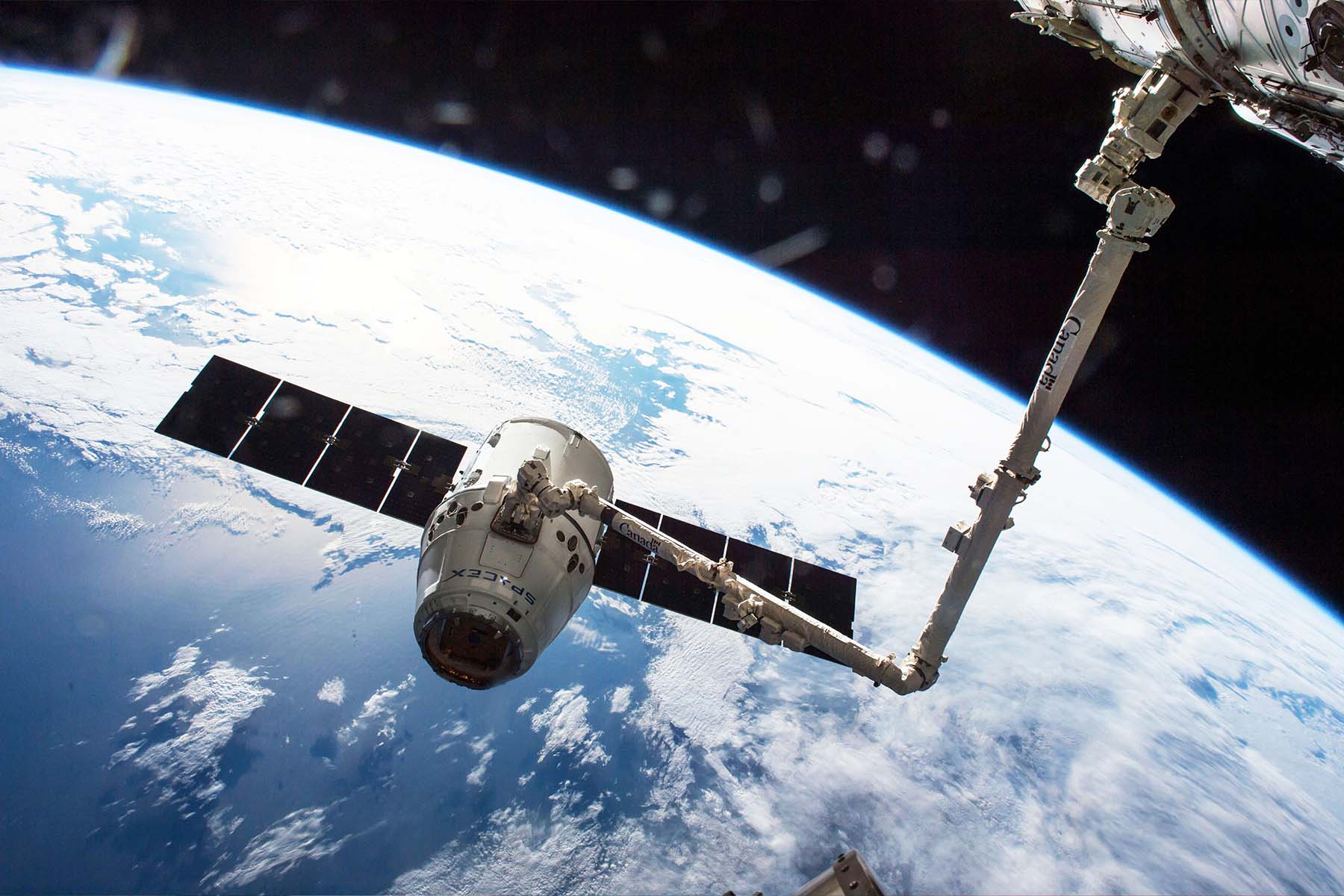
I was led through a maze of corridors, where I caught glimpses of staff playing Ping-Pong or filling food trays in the “Lunch Pad”—or climbing inside space shuttle simulators. Inside the Dynamic Robotic Emulation and Mixed Reality (DREAMR) lab, I met chief technology officer Cameron Ower and vice president of robotics and space operations Holly Johnson. “This facility came about because of the challenges of doing things in a zero-gravity environment,” explained Ower, who joined the company in the mid-1980s, not long after the first Canadarm was launched into space in 1981. At the time, the technology was the domain of Spar Aerospace and the Canadarm itself was the result of a partnership between NASA and Canada’s National Research Council. (The Canadian Space Agency wasn’t born until 1989.) “You can’t test robots in full on the ground before they go up in space,” Ower said. “The original Canadarm couldn’t even lift its own weight [in Earth’s gravity].” Instead, developers were forced to test the Canadarms’ abilities through complex mathematical simulators. It was an initial example of engineers and operators relinquishing some control over the operation of the arms.
The even heavier Canadarm2 presented additional challenges when, in 2008, it was upgraded with Dextre, a versatile appendage at the end of the arm for more delicate uses. (Former prime minister Jean Chrétien had tried to dub it the “Canada Hand,” but the branding never caught on.) “It had to not just move things around but get down to holding tools and unbolting things,” Ower said. “There are some things that involve precision. It can do it better than people.” In addition to being nimbler, Dextre was the first robotic appendage of the ISS to operate fully automatically—controlled not by a human’s hand but by a computer running commands. This was a selling point that helped MDA persuade space agencies of the technology’s benefits. “It can’t even be operated by the astronauts in orbit,” explained Johnson.
The original Canadarm was controlled by astronauts inside a space shuttle with direct line-of-sight views via cameras. They operated it using verbal commands from spacewalkers at the end of the arm. It had both programmed and manual modes for manoeuvring payloads, with the option to program the arm for a specific task on the fly. But there was always one hand on the joystick in case the arm lost control. This was the 1980s, and people had little experience working alongside robots in factories on Earth, let alone in outer space. But faith in person–robot collaboration grew, and in time, astronauts became comfortable riding on the end of the arm as it worked.
Having worked on every Canadarm program, Ower has witnessed the evolution of “collaborative robotics,” or “cobots” that operate alongside humans. Perhaps the most significant change in the field has been human beings’ trust of robots, especially the intelligent kind. “In the ’70s and ’80s, there was a pretty standard operational paradigm,” Ower said. “Robots here, people over there.” Sci-fi classics such as 2001: A Space Odyssey and Star Trek revealed our inherent paranoia of robotic malfunction (or rebellion), but this was based on a healthy distrust of robots. A malfunctioning Canadarm2 could cause significant damage to a space station. (The 2013 film Gravity begins with micro meteors breaking a Canadarm off a shuttle and taking Sandra Bullock’s character with it into space.) As Hadfield put it, “You watch it like a nervous parent, because if it does something wrong, it can kill everybody.”
The Canadarm2 still requires dedicated work stations and, thus, high levels of crew training at NASA’s Johnson Space Center in Houston and at the John H. Chapman Space Centre. The technology exists aboard the ISS for the Canadarm2 to function automatically, just as the technology exists for your phone to book an appointment with voice controls. And yet most of us are likelier to perform these tasks manually than delegate them to voice control for fear that Siri might schedule the appointment for the wrong time or insert the wrong address. Currently, only a small percentage of the arm’s tasks are set by planned sequences activated by astronauts or operators on Earth. But in space, as on Earth, it’s virtually impossible to thrive without outsourcing some jobs and a lot of thinking to computers, especially when there are so many risk factors to negotiate.
If humans are going to make it to the moon again, and especially to Mars, we’re going to need to place more trust in automation. Stationed 400,000 kilometres from Earth, 1,000 times the ISS’s distance from the planet, the Lunar Gateway will be crewed for only around six months at a time. Automation will be required for the arm—as well as other technologies—to perform operations without human interaction or oversight. The space station’s equipment will have to endure extreme levels of radiation and extreme temperature changes; it will be challenged by frequent communication lags and blackouts on the Deep Space Network—public WiFi for space—as opposed to the constant communication with the ISS. Under such conditions, autonomous artificial intelligence will no longer be a benefit but a necessity for the arm to interact with the environment, determine the necessary steps to accomplish a mission, and coordinate with other systems to schedule and perform tasks automatically. “They might create a plan that is at a higher level to accomplish a task, and then the system understands its environment and can make decisions locally,” explained Johnson. She likened it to setting a self-driving car to its destination and then monitoring the performance with your hands firmly on the steering wheel.
There’s an economic case too: when it costs up to $100 million to send each astronaut to the ISS and they have a short window of time to complete their missions and conduct research with potentially profound benefits to humanity, it doesn’t make sense for them to dedicate years of training and precious station time to learning to run tasks on a system that’s perfectly capable of functioning independently. Backup manual controls will remain with crew aboard the Lunar Gateway station, and primary mission controls will be operated by MDA in Brampton. “One of the big differences with Canadarm3 is that Canada will own and operate Canadarm3,” said Johnson. Even though Canada conceived of the arms, branded them with its national flag, and named them after itself, the country has never actually owned a Canadarm in space before. (Canada owned the first Canadarm up until it was ready for testing but then gifted it to NASA; Canadarm2 was procured by NASA.) “Not only is Canada going to do operations, but industry—MDA—is going to do operations,” Johnson said.
A non-governmental entity operating in space was unfathomable a decade ago, but alongside the emergence of private space companies, MDA’s recent growth in business and sway is a sign of things to come for the commercial space race and Canada’s place in it.
After decades of operating from a drab brutalist building in Brampton’s research park, the company’s headquarters is moving into a new multi-million-dollar Centre of Excellence for Space Robotics nearby, coupled with a recent surge in new hires. In part, the growth was driven by demand for spinoffs of Canadarm technology: NeuroArm and KidsArm are two minimally invasive surgical tools developed by MDA for neurological and pediatric procedures. But the commercial space race has dramatically opened the doors for more direct translations of Canadarm technology. Axiom Space, based out of Houston, Texas, will become the first company to connect a module to the ISS in 2025 and plans to establish an orbital space station after the ISS retires in 2031. MDA recently signed a deal with Axiom for the delivery of thirty-two external interfaces—that connect robotic arms or docks—to the ISS to begin the assembly of the Axiom station. For all the gimmicks of the commercial sector—Elon Musk’s SpaceX brashly sending a Tesla into space; Jeff Bezos’s supersonic joyride aboard his company’s Blue Origin rocket; a Dutch company holding a contest for volunteer Mars colonizers—it is yielding results more efficiently than any space agency has in generations. “That’s the dream,” Johnson said. “To be able to build something for the government and sell it to other customers.”
Before entering another lab, we paused to place the soles of our shoes on a loud mechanical brush to remove potential contaminants. “It’s been difficult because, historically, you have one or two large government missions a year,” Johnson said. “But the volume of new missions in the marketplace now allows us to take our know-how and package it in a commercial, cost-efficient way.” MDA’s ultimate goal is to produce commercial-grade space robotics that become as indispensable to the Axioms and SpaceXs of the galaxy as they’ve been to NASA for the past forty years. And whether the technology serves a public or a private client and is built with top-of-the-line or downmarket materials, the plan is for all its units to run on a standardized control software, securing MDA’s place as the Apple of space robotics.
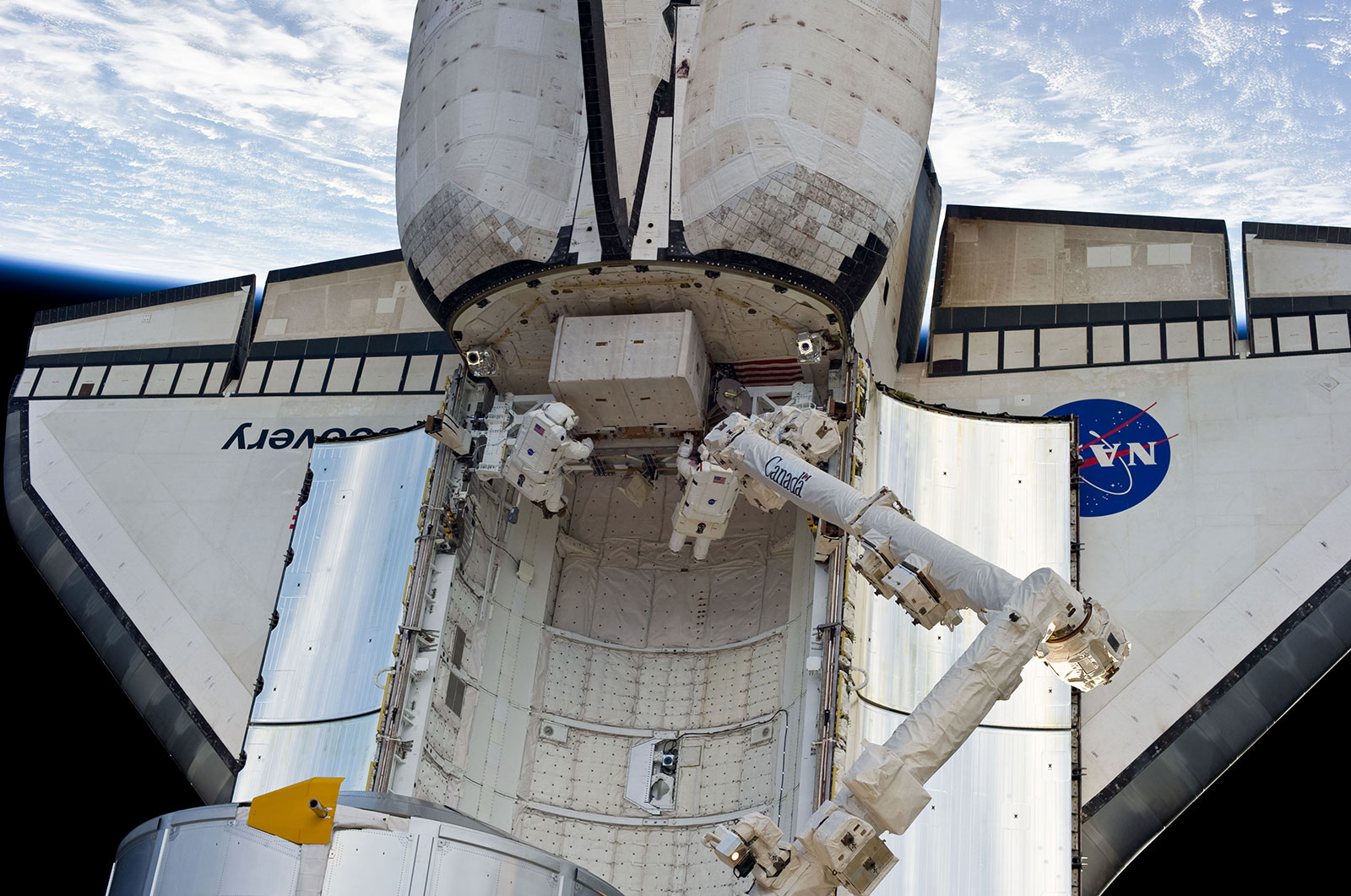
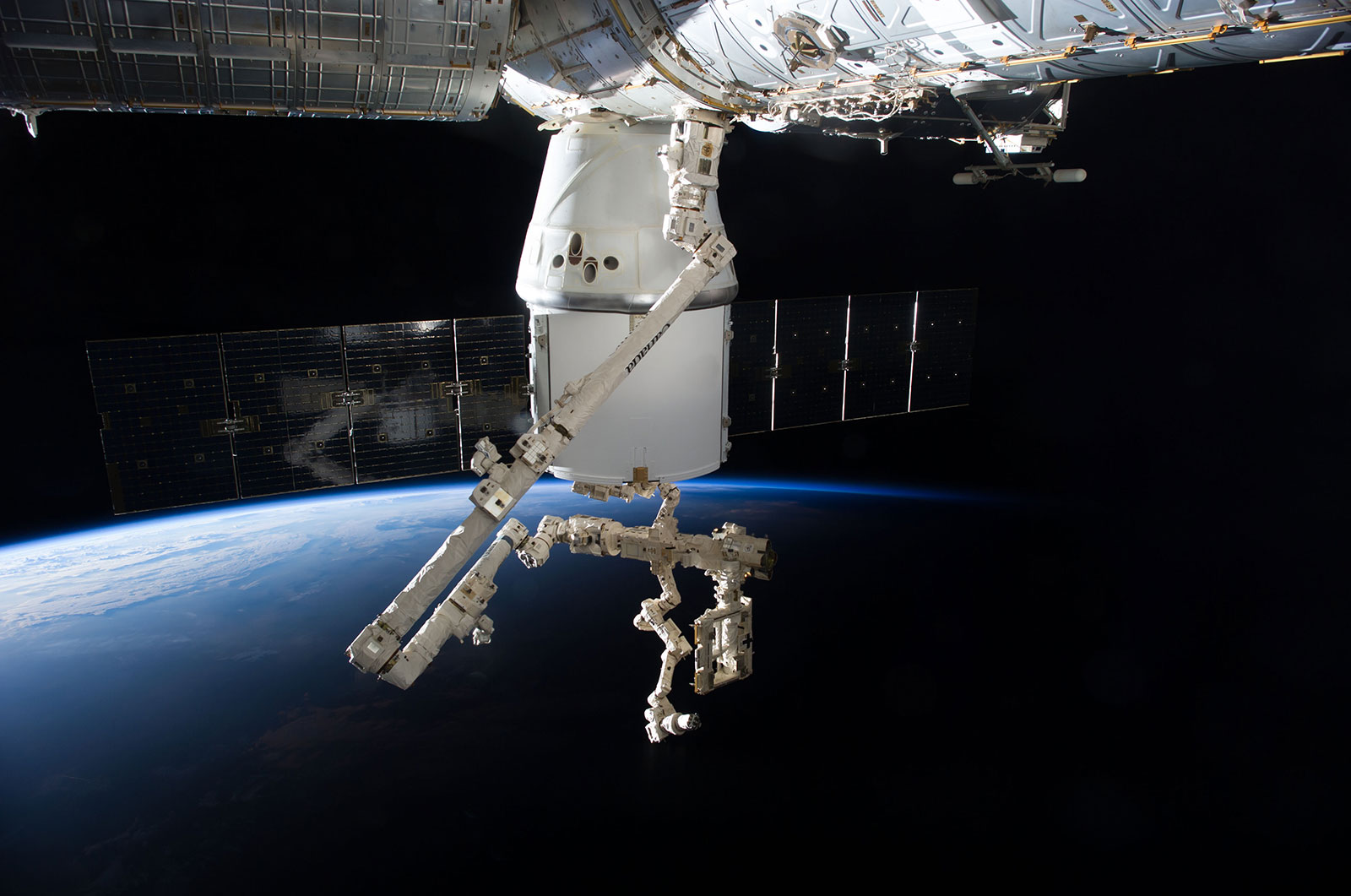
I pulled on a visitors’ lab coat and waited behind a heavy glass door until Ower unlocked it with his card. The warehouse-sized production room was furnished with a full-scale model of a folded Canadarm, unshelled planetary rover prototypes, and a bunch of other machinery I couldn’t tell apart from extra-terrestrial technology. As Ower and Johnson described the indecipherable objects they placed in my hand, they couldn’t hide just how big this all was. Especially Johnson, one of the company’s youngest executives at thirty-six years old. A new state-of-the-art headquarters, a moon mission, commercial space travel, rover prototypes, and the Canadarm3 parts surrounding her—all of it clearly stirred up a lot of pride in the Bramptonite. Even the disappointments—like when the ExoMars planetary rover MDA had worked on for twenty years in collaboration with Russian counterparts was iced due to the invasion of Ukraine months before its scheduled launch date—have the power to rear the inner space kid of the scientist who grew up ten minutes away.
Speaking with Johnson, I was reminded that her—and my—generation didn’t witness a space race, let alone a moon landing moment. The most defining space event was most likely the Columbia shuttle disaster, in 2003, that killed all seven astronauts on board. People alive in the ’60s and ’70s were bombarded with firsts, milestones, and achievements of a different, more personal kind. For this generation, any interstellar passion arose from more subtle moments: the haunting first images of a black hole, the curious photographs sent back from a rover on Mars, or even the simple, personal experience of staring at the night sky, quietly watching for satellites. But with the Lunar Gateway on the near horizon and a human mission to Mars on the distant horizon, it’s hard not to feel like we’re entering a second golden age of space exploration.
The John H. Chapman Space Centre near Montreal is named after the father of Canadian space sciences who directed the Alouette satellite program that, in 1962, made Canada the third nation in space. Enlarged, glossy images of the satellite, Chapman, and, of course, the Canadarms adorn the main corridor, which extend the entire length of the building from north to south and flare out into two wings. “The floor plan is similar to the ISS,” said Ken Podwalski, executive director for the Lunar Gateway program at the Canadian Space Agency. He guided me along a procession of exhibits, moving and speaking at rocket speed, pointing to satellite models dangling from the ceiling, ISS dioramas, portraits of all nine Canadian astronauts to reach space and, of course, the $5 bill, which he stopped to admire. “My fun self-glorifying story here,” he said with a dramatic pause. “I sketched that.”
Podwalski led negotiations with NASA and partner agencies to secure, among other things, seats for two Canadian astronauts—one on the Artemis 2 and the other on a future mission to the Lunar Gateway—in exchange for contributing the Canadarm3. One of those astronauts will be Jeremy Hansen, part of a four-person crew for the Artemis 2 mission around the moon, scheduled for 2024. A clear master of the art of persuasion, with an arsenal of ready one liners and relatable metaphors, Podwalski had one comparison he consistently drew on for the Canadarm—not a human limb, friendly android, construction crane, or Swiss Army Knife but a potato salad. “When you’re planning the next party, you check your invitations list and say, ‘We really want to see Canada at the party because, gosh, you just do everything right when you make that potato salad,’” he said. The Canadarms become a foot in the door for the next space endeavour—and an invitation to then bring other offerings, in addition to the potato salad, to the party. “We have solid astronauts. A background in life sciences for crew health. We have done sensors. We have camera systems. We’ve dabbled with rovers. But the reason we’re getting invited to the party is to bring the potato salad.”
There have been rival potato salads. Multiple remote manipulator systems have been in the market since 2001, two of which are currently being used on the ISS. The Japanese Exploration Module Remote Manipulator System, or JEMRMS, was partially made with MDA technology, is smaller and less capable than the Canadarm2, and is treated more like a colleague than a competitor. But the European Robotic Arm, built to fit the Russian side of the ISS, has many capabilities and features similar to those of the Canadarm2. The ERA can move payloads and aid in spacewalks faster than the Canadarm2 can because it’s significantly lighter and shorter, though it lacks a Dextre-like “hand” that allows the Canadarm2 to uniquely perform maintenance tasks on the ISS. There is no obligation on space agencies to use Canadarms on future orbital stations, such as the one planned for Mars in the next fifteen to twenty years by the US, Canadian, European, and Japanese space agencies. Future space travellers will have even more options, such as the “Chinarm” currently aboard China’s low Earth orbit station, and GITAI IN1, a miniaturized Japanese robotic arm being developed for the commercial sector.
Podwalski was unfazed by any rivals. “I hate to be a little bit pompous here, because it’s very un-Canadian,” he said, continuing with the tour, “but the other robotic systems don’t really touch the Canadian robotics.” Still, the CSA is clearly aware of the risks. “Moving to deep space, looking to the moon, and looking to Mars, space robotics is probably not all we need to bring to the table to be a credible player,” Podwalski said. On the heels of the Canadarm3 announcement in 2019, the agency created a program to award $150 million in contracts for the development of non-robotic space technology. To space insiders, the Lunar Exploration Accelerator Program, or LEAP, is a deliberate push to ensure Canada doesn’t end up being a one-trick space pony or facing the inglorious fates of some Canadian technology companies like BlackBerry or Avro Canada.
Many Canadian aerospace engineers have never forgiven the government for dismantling Avro Canada’s CF-105 Arrow, a billion-dollar project that, on October 4, 1957—the same day that Russia sent the world’s first satellite into orbit—rolled out the fastest supersonic jet the world had ever seen. Mired in political controversy and conspiracy, the dismantling of the project and assembly line two years later drained Canada of hundreds of the world’s smartest and most ambitious engineers, a dozen of whom landed in Hampton, Virginia, working for a federal aeronautics program soon to be renamed NASA. As Erin Gregory, curator of the Canada Aviation and Space Museum—where an Avro and a Canadarm are both displayed—put it to me, this was, at the time, “the best thing that ever happened to NASA.”
Perched above the Robotics Mission Control Centre inside the John H. Chapman Space Centre, I could see directly into the ISS via a wall of TV screens showing live feeds of two American astronauts preparing for their next spacewalk while another set up exercise equipment. “This is the first instance where any human space flight activity by NASA was conducted outside of a NASA facility. And we set that up here,” Podwalski said. On the walls bordering the mosaic of activity were various crests, each representing a space mission. There was 1984’s STS-41G, which launched Canada’s first astronaut, Marc Garneau; 1992’s STS-42, which took neurobiologist Roberta Bondar to the ISS to establish the first international microgravity lab; and STS-100, the 2001 shuttle mission that brought the Canadarm2 into orbit.
Before we left, I stole one more moment to observe the live ISS feed, imagining, for a moment, the Lunar Gateway crew in bulky, pressurized spacesuits, exploring the moon’s surface with rovers—some commanded, some automated—all in service of establishing a sustainable human presence there and enabling deeper space exploration. In the grand scheme of near-future space exploration, the moon is the base camp—Mars is the summit. I pictured some of the monitors turning from grey to red, dust blowing across the rocky terrain, as humans drove rovers across the surface of another rock in our solar system, collected soil samples, and set up research equipment to better understand the planet’s potential for supporting life. The ways in which their missions will transform our world are still beyond the scope of imagination, but some iteration of the Canadarm—or several Canadarms—will certainly be there, lending a crucial hand.




